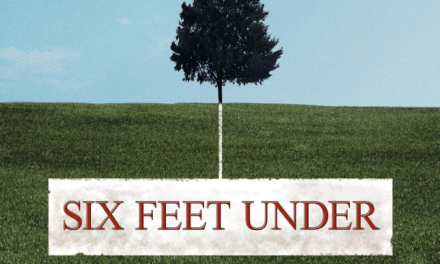I finally got around to watching the new version of Roots (if you haven’t seen it yet, episodes 2-4 are still available on the IPlayer). The series, even in its new version, still feels monumental: it evidences just how rare it still is to see history told from any other point of view than that of a white, heterosexual man. Unfortunately, despite this feeling of observing television history, I also found myself being quite disappointed. I had anticipated this new series with rather high expectations, and these kept me from fully enjoying this series.
Don’t get me wrong: I think the series is monumental, as I said, and generally very good. However, my expectations were so high largely because I assumed that a new version would automatically be better than what, at the end of the day, was a production for the lowest common denominator network in the age of scarcity when US television was primarily interested in producing mass entertainment. Right? The original version, after all, was made for ABC in 1977, before even Hill Street Blues (NBC, 1981-1987) made it onto American television. Long before, then, American television became famous for telling complex narratives with a political edge.
In other words, as I observed my reactions to Roots, I noticed that I had fallen for the same old narrative of quality TV: a typical neo-liberal story of progressive improvement, that is based on conceptualisations of discerning individuals, looking up content on small-scale, narrow-cast cable channels, which will put the effort and money into labours of love, such as a new version of Roots. Feel free to shake your head in disappointment. I did.
So, I learnt one thing, then: even when we try, we can sometimes not escape the pull of these narratives. But watching the new version of Roots also raised the same old question so widely debated in our field: namely that of evaluation. Issues of evaluation have haunted our field since the beginning of its development: also because early TV studies obviously aimed to rescue the medium from derision, particularly as far as television for women was concerned. In the resulting debate, I have found Christine Geraghty’s well-considered plea to return to evaluative discourses particularly compelling. Geraghty argues convincingly, in my eyes, that we need to be mindful of certain elements of the text, including genre, but also who makes the judgements, but that we should nevertheless not shy away from evaluating television drama in particular. So, following her suggestions, I want to ask: what do I value when I argue a TV series is good? And how might this be different from others? What elements do I value and evaluate when I declare television worthy of being seen? Or in very different words: why was I mildly disappointed with the new version? The direct comparison usefully offers some tentative answers to these questions.
The first thing to notice is that production techniques have certainly changed. The 1977 version was still clearly shot on a studio lot, with purpose-built sets which were all a bit too neat, tidy and rectangular for what they were supposed to be. The new version seemed largely shot on location, even when some locations were clear not in the place they were supposed to represent (a grant house in England was clearly shot somewhere in the North East of the USA, for example). Similarly, the use of light has changed: in the 1977 version, the main concern seems to have been with visibility, while the more recent series largely depends on realist lighting. Acting for television also has changed: the 1977 version still includes a lot of overly dramatic, exaggerated acting that is closer to theatre, with actors offering wide gestures, and over-the-top facial expressions. Ed Asner, who won an Emmy for his portrayal of the haunted captain in charge of the slavery ship, offers a particularly good example of this. By 2016, such acting had disappeared and had been replaced by significantly more naturalist forms of performance. Characterisation has become much more focused on roundness: none of the characters in the 2016 version is entirely good or evil; rather each is plagued by a particular weakness which transforms them into relatable human beings. In addition, contemporary television is much more focused on showing rather than telling: images demonstrate what is being done to each generation, rather than each character telling us of what happened to them as is much more common in the 1977 version. The overall result is a series that feels more harrowing, that is clearly more violent and overall grittier than the 1977 version. All of this points to a need to be aware of the specific historical developments of television production.
There were also moments that felt plain silly in the 1977 version: the shots of the animals, dispersed primarily through the first episode which emphasise the strangeness of the land (the story begins in the Gambia) and thereby contribute to the othering and exoticisation of the country and Africa as a whole. Or O.J. Simpson being cast as the father of Kunta Kinte’s first love interest Fanta, and the narrative demanding that LeVar Burton runs away from Simpson, only to be overtaken by the latter’s signature speedy sprint. But there are similar moments of unevenness in the new version: in episode 3, for example, we suddenly get a voice over narrator who disappears just as suddenly. On the positive side, both series benefit from some excellent acting – both LeVar Burton and Malachi Kirby make excellent Kunta Kintes. Forest Whitaker is particularly impressive as Fiddler in the 2016 version, but then so is Louis Gossett Jr. in the 1977 version.

Finally, both versions include peculiarities that mark them out as politically problematic: the 1977 version insists on including a sympathetic white person in each generation, indicating that ABC was very nervous about showing such a series to a broad audience. Thus, including sympathetic white people constantly reinforces the idea that not all whites were behaving so amorally, and thus undermines any suggestion of collective guilt. The 2016 version, however, leaves not much space for the women’s point of view, largely because their point of view is only communicated via verbal storytelling whilst the men’s stories are usually shown, thus giving more space, and visual evidence, to their stories. It thus seems in line with wider shifts in American television towards greater emphasis on men’s stories.
So what does this comparison teach us? There remain, clearly, a number of elements open to our evaluation. And, again, there remain a range of things that need to be taken into consideration. As Geraghty, I would argue that television studies ‘would benefit from paying more attention to the visual and performative aspects’ (pp. 39-40) when evaluating series. Arguably, there has been a shift to focus more strongly on these aspects (see also Gary Cassidy and Simone Knox’s blogs for CSTOnline), though, all too often, the evaluative element is missing in the discussion of TV drama. More importantly, however, is the need to be aware of the historical dimension of television drama production. Styles, but also our aesthetic judgements, change. It is our job not to be complacent and simply prefer the contemporary. Rather, we should recognise the merits and problems of each version: as for Roots (2016) versus Roots (1977), this means recognising that both versions offer monumental television that is however hampered by concerns that are largely determined by the specific historical conditions existing at the time of their production.
Elke Weissmann is Reader in Film and Television at Edge Hill University. She is currently considering changing this to Reader in Television and Film, however. Her books include Transnational Television Drama (Palgrave) and the edited collection Renewing Feminisms (I.B.Tauris) with Helen Thornham. She is vice-chair of the ECREA TV Studies Section and sits on the board of editors for Critical Studies in Television. She migrated to the UK in 2002 after realising that German television was as bad as she remembered.




